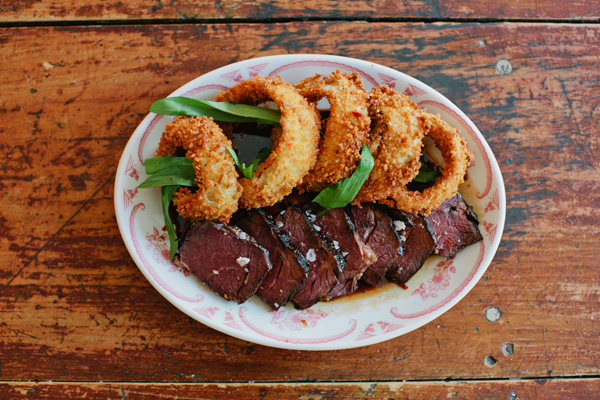
I recently had a realization. I’m one of those odd people that loves networking. Despite having very strong introvert tendencies (more on that in another post), I love connecting with new people- and perhaps even more so, making fortuitous connections between others. But there’s definitely a certain level of ick factor around the term ‘networking’. It conjures up feeling of inauthenticity and pushiness. But because doing it is such a necessary part of my work, I’ve not only gotten very comfortable with it, but figured out an approach that actually feels good (and inherently leads to more auspicious relationships).
It dawned on me the other day that others might not possess that same familiarity or ease with the practice, so I thought I’d outline my approach. Regardless of your job or career, knowing how to network well is key. Let’s dive in!
1. Let Go of the Fear I think one of the biggest hurdles to reaching out to someone we’d like to network with is often simply our fear that we’re bothering them. Here’s my best piece of advice on that: drop that fear. Now. It won’t get you anywhere. The people that advance are doing so because they ask for help. If we don’t ask for something we won’t get it, and the worst thing someone can say is no. At the same time, if your outreach is structured in the right way (and I’ve outlined that approach below), people will more often than not be flattered. Regardless of their position or field, they’ve most definitely been in your shoes before, and I find because of that, people are usually delighted to help or provide guidance. I’m always flattered when a reader reaches out and wants to meet to learn more about my career. I find it important to take the time to do so, because I’m so incredibly thankful for all the people who have helped me (and still do!) along the way.
2. Consider Your Subject Line Before even getting to the body of your outreach email, it’s key to think about your subject line. I have a few formats that keep this structure simple, but also increase my chances of the person reading my email. If I’m reaching out to someone I’ve never met before but we have a shared connection, I’ll write something like “Connection Through <insert name>.” If it’s someone I met at an event, I’ll write something like “Follow Up to X Event” or “So nice meeting you at X event!” And lastly, if it’s someone I personally know but haven’t seen in a while, I’ll write something like “Hello & Coffee?” Whatever the circumstance, it’s important to think about how you structure the subject line because this most definitely has an impact on whether they’ll read your email or not.
3. Keep It Brief But Direct After crafting the subject, you need to consider the body of your email. You’re likely emailing someone who receives a lot of email, so keep your message brief and to the point. I generally lead with some light flattery about how I’d love to learn more about their career (do not go over the top here though as it can come across as inauthentic), and then mention I’d love to share more about my current work and discuss ways in which we could potentially collaborate/work together in the future.* It’s important to mention the last bit to really set expectations for the meeting. If someone has zero idea you’re planning on pitching them in some form, it will definitely devalue the quality of the interaction. It will also make you much less likely to even do the pitch! *Note: Pitching your services may not be appropriate for all interactions, but regardless of the situation, you want to provide the other person with a clear explanation of what you do and what they can do to best assist you.
4. Make It Convenient When setting up the meeting you want to make it as convenient as possible for the person. Suggest several ways to connect (coffee, lunch, breakfast, in their offices, etc), and make it clear you’re happy to come to their neighborhood.
5. Determine Your Desired Outcome If you’re clear on what your desired outcome for a meeting is, it’s about one hundred times more likely you’ll achieve that outcome. In fact, often if I walk out of a meeting feeling like it could have gone better, I can usually pinpoint my feelings back to not fully fleshing out my desired outcome. Your desired outcome can be a whole host of things- a proposal, a second meeting, an introduction to a more appropriate contact, and so on. Whatever it is, getting really clear about it prior to the meeting and loosely mapping out how you’re going to lead the meeting will strongly increase your success rate. They’re also some general questions you should have really solid answers to. Questions like: What exactly do you do? What types of clients do you serve? How are your services structured? Crafting the responses to those answers is whole other post in and of itself, but goes hand in hand with successfully leading the meeting and achieving your desired outcome.
6. Wrapping Up the Meeting These types of meetings can so often flow from one subject to another and be interspersed with some personal chatter, especially if you have a shared connection. Because of that, I always make a point at the end to rehash our next steps, whether it’s me sending a proposal, them introducing me to another colleague over email, me sending my availability for our next meeting, etc. You should be the person to take the lead on that conversation element.
7. Say Thank You Whatever those next steps are, make a point to say thank you. Like an interview, stick to sending something that day. I generally send thank yous via email, but occasionally if the response doesn’t require day of communication, will send a hand written note.
That about sums it up. I hope that was helpful! Question: Would you guys enjoy more posts like this? I’d so love your feedback. And if you’re yearning for more of this style of content, I’ve got a post on The Well today that shares the method by which I changed my blog’s name as well as an interview about my career on Caramelized. Thanks to both for having me!
Image in graphic by Sutejo Tan

















